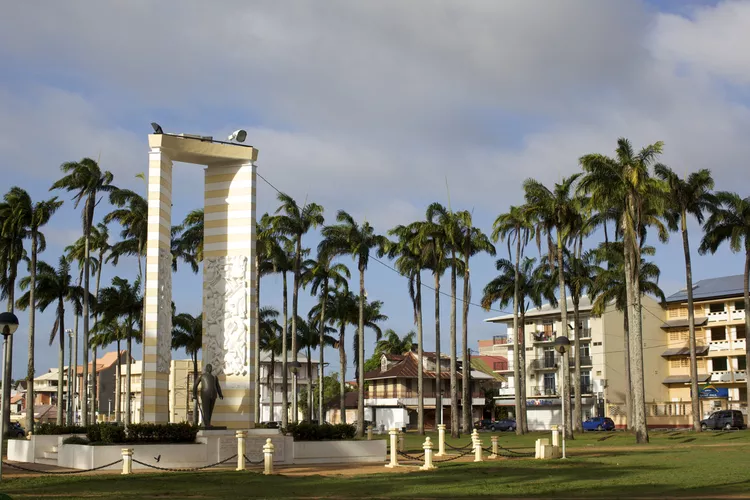Summary
Cayenne, the Heart of French Guiana
Mix a tropical climate, Creole cuisine, sidewalk cafes, gendarmes and voilà — you have the charming blend that is Cayenne, the capital of French Guiana. French Guiana is an overseas department of France, and the French influence significantly enhances Cayenne’s appeal. The remnants of French colonial architecture, palm trees shading plazas, and the rich multicultural heritage combine to create a unique atmosphere.
Cayenne’s strategic position on a small, hilly peninsula between the Cayenne and Mabury rivers demonstrates its historical significance, having served as a French outpost amidst conflicts with Brazil, Portugal, the Dutch, and the British before becoming a French colony again.
Things to Do and See in Cayenne Proper
From the remnants of Fort Cépérou, visitors can enjoy stunning views of the town, the port, and the river. When exploring Cayenne, don’t miss the main plazas:
- Place Grenoble: View the main public buildings including the Mairie (Town Hall), the post office, and the Prédicture.
- Place des Palmistes: Located in the bustling commercial district.
- Place Victor Schoelcher: Named after the figure who abolished slavery in the colony.
- Place du Coq: Home to Cayenne’s principal produce market.
The Musée Départemental showcases a fascinating collection of natural history, archaeology, and insights into the penal colonies. In contrast, the Botanical Gardens present an impressive array of tropical plants and foliage from the region.
Additionally, visit the Franconie Museum, and the Museum of Guyanese Cultures, along with the Félix Eboué Museum, all recognized as important cultural sites. Lastly, indulge in the diverse culinary offerings representative of French Guiana’s rich heritage (and yes, Cayenne did give its name to the hot pepper).
Things to Do and See Outside Cayenne
The French Space Center in Kourou provides tours of the Centre Spatial Guyanais. Historically, Kourou served as the headquarters for the penal colony known as Devil’s Island until the closure of penal institutions in 1953. Remarkably, Kourou has transformed into a vibrant space-age city with modern architecture.
Explore Mount Favard, Ile Royale, Ile Saint Joseph, and Ile du Diable (Devil’s Island), all considered historical sites. Alternatively, immerse yourself in a village festival to experience the diverse cultures of the country. The lush rainforest interior is best navigated with a knowledgeable tour group.
When to Go and How to Get There
Situated just north of the Equator, French Guiana experiences minimal seasonal variations, maintaining a tropical, hot, and humid climate year-round. However, the drier season from July to December offers slightly more comfortable conditions. Notably, Carnaval, typically celebrated in February and March, is a significant event in Cayenne.
Moreover, Cayenne boasts excellent air connectivity to Europe and various other destinations. For those wishing to explore coastal areas, steamboat services are available to locations like Kourou and St. Laurent du Maroni, near Suriname.





